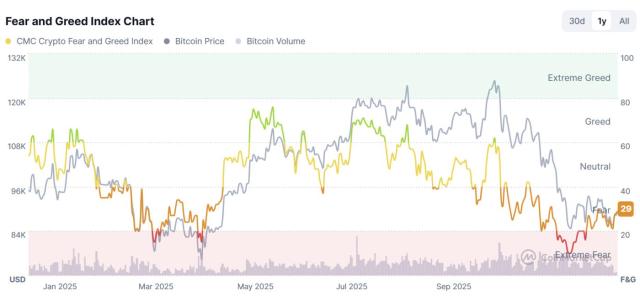Bitcoin breaks into the central bank's treasury: the crossroads of global monetary power reconstruction
This article is machine translated
Show original
Here is the English translation of the text, with the specified terms preserved:
On February 19, 2025, Aleš Michl, the Governor of the Czech National Bank, proposed that central banks around the world should consider including Bit as part of their reserve assets. This proposal has sparked widespread discussions about the potential of Bit as a reserve asset and has also prompted a re-examination of the relationship between the traditional financial system and crypto assets.
Currently, central banks have different attitudes towards Bit, ranging from the positive embrace in El Salvador to the firm opposition of the European Central Bank, and the cautious exploration in the United States. A global debate on "digital gold" is unfolding, which may have far-reaching implications for the international financial landscape.
I. The Vanguard: The "Nationalization" Experiment of Bit
El Salvador: From Fiat Currency to Strategic Reserves
After designating Bit as legal tender in 2021, El Salvador has continued to increase its Bit holdings, currently holding 6,068 Bits (worth about $554 million), making it the world's first sovereign nation to include Bit in its foreign exchange reserves. Although this strategy has been highly controversial, El Salvador's President Bukele has stated that "Bit is a financial shield against the hegemony of the US dollar."
However, on February 2, 2025, El Salvador passed reforms to the Bit Law, officially revoking the status of Bit as legal tender. This means that Bit will no longer be considered El Salvador's legal tender, and businesses and individuals will no longer be required to accept Bit as a means of payment. However, Bit will still be regarded as a "voluntary legal tender," meaning that it can still be used for transactions and payments if both parties agree. This move is to comply with the requirements of the International Monetary Fund (IMF) in order to obtain IMF loan support.
The Czech Republic: The Ambition of a European Crypto Bridgehead
The Czech National Bank has proposed using €7 billion to purchase 70,000 Bits (accounting for 5% of its foreign exchange reserves). If this plan is implemented, the Czech Republic will become the world's third-largest Bit holder. The rationale behind this is the monetary logic of Governor Michl: Bit has an annualized return rate of 130%, far exceeding the 30% of gold, and its decentralized nature can effectively hedge against geopolitical risks. More importantly, the Czech Republic has successfully built the most active crypto ecosystem in Europe through policies such as exempting long-term holders from capital gains tax.
The United States: Strategic Exploration in the Trump Era
During the Trump administration, the federal government in the United States had proposed a plan to establish a Bit strategic reserve. On January 23, 2025, Trump signed an executive order to establish a federal digital asset working group to assess the feasibility of "establishing and maintaining a national digital asset reserve."
At the same time, legislative activities related to Bit reserves are becoming increasingly active in various U.S. states. As of February 2025, 21 states have introduced bills related to a Strategic Bit Reserve (SBR). Among them, Utah, Oklahoma, and Arizona have made the fastest progress. Utah's Bit reserve bill has been passed by the House Economic Development Committee and is currently awaiting Senate consideration. If approved, it is expected to take effect as early as May 7 this year. In addition, Texas resubmitted a bill on February 12 aimed at establishing a strategic Bit reserve and expanding the investment scope to other cryptocurrencies.
These state-level legislative proposals demonstrate a strong interest in Bit as a reserve asset, although their implementation still faces many challenges and uncertainties, such as funding sources, regulatory frameworks, and market volatility.
II. The Conservatives: The Defense Battle of the Traditional Financial Fortress
The European Central Bank: Lagarde's "Five-Pronged Sniper Attack"
ECB President Lagarde strongly opposes the inclusion of Bit in the reserve system, citing the following five major risks:
1. High volatility: Violent fluctuations in Bit prices may disrupt the stability of monetary policy.
2. Concentration risk: About 2% of addresses control 95% of Bits, which may lead to market manipulation.
3. Regulatory vacuum: Lack of a unified global framework, making it difficult to effectively prevent money laundering and fraud.
4. Liquidity defects: Difficult to liquidate quickly under extreme market conditions.
5. Systemic risk: May exacerbate financial shocks in economically vulnerable countries.
The International Monetary Fund (IMF)'s Warning
The IMF has repeatedly pointed out that the anonymity and cross-border mobility of Bit may weaken capital controls, posing a threat to the monetary sovereignty of emerging markets.
III. The Core of the Game: Can Bit Cross the "Three Mountains" of Reserve Assets?
The Paradox of Value Stability
The fixed supply of 21 million Bits gives it anti-inflationary characteristics, but its annualized price volatility (over 80%) is much higher than that of gold (about 15%). The Czech National Bank is trying to resolve this contradiction through "dynamic dollar-cost averaging + derivative hedging," but the risk of liquidity mismatch still needs to be addressed in practice.
The Risk of Geopolitical Instrumentalization
A report from the Bit Policy Institute indicates that Bit can help sanctioned countries (such as Russia and Venezuela) circumvent the US dollar system, but it may also become a tool for financial games between major powers. For example, if the United States controls a large amount of Bit through ETFs, it may further consolidate its global financial hegemony.
Intergenerational Technological Conflict
The real-time settlement systems (such as SWIFT) relied upon by traditional central banks are fundamentally at odds with the asynchronous settlement of the Bit network. Although Bit Layer 2 technologies (such as Stacks and Babylon) have tried to expand functionality through smart contracts, their security and compliance still need to be verified.
IV. Future Projection: Three Key Variables in 2025
The Choice of the G7 Countries
According to Forbes' forecast, the G7 or BRICS countries may announce the establishment of a Bit strategic reserve in 2025, triggering a global reserve asset race. If the United States takes the lead, Bit's market capitalization share could rise from the current 1% to 20% of gold's market value.
Breakthrough in Regulatory Sandbox
The Trump administration may push for the passage of the Stablecoin Act, providing a clear regulatory framework for crypto assets. At the same time, the U.S. Securities and Exchange Commission (SEC) may approve an Ethereum ETF with staking functionality, further opening the door to traditional capital markets.
Technological Integration Experiment
Bit miners are transforming into AI computing power providers, and institutions like JPMorgan Chase are exploring cross-border settlement networks using Bit as collateral. If these use cases are scaled up, Bit will evolve from "digital gold" to "financial infrastructure."
Conclusion: A Long Narrative of Reconstruction and Compromise
The value of the Czech proposal lies not in whether it can be realized, but in that it has torn open the cracks in the traditional monetary system - as the credibility of fiat currencies is constantly eroded by war, debt, and inflation, the "algorithmic trust" represented by Bit is becoming an undeniable alternative.
However, this transformation is bound to be painful: central banks need to find a balance between relinquishing control and financial innovation, while Bit also needs to prove that it is not just a speculative tool, but a sustainable anchor of value.As the economist Matthew Ferranti said, "Bit is not a substitute for gold, but a new strategic asset of the digital age. Central banks that reject it may miss the ticket to the next monetary era."
Sector:

Source
Disclaimer: The content above is only the author's opinion which does not represent any position of Followin, and is not intended as, and shall not be understood or construed as, investment advice from Followin.
Like
Add to Favorites
Comments
Share






